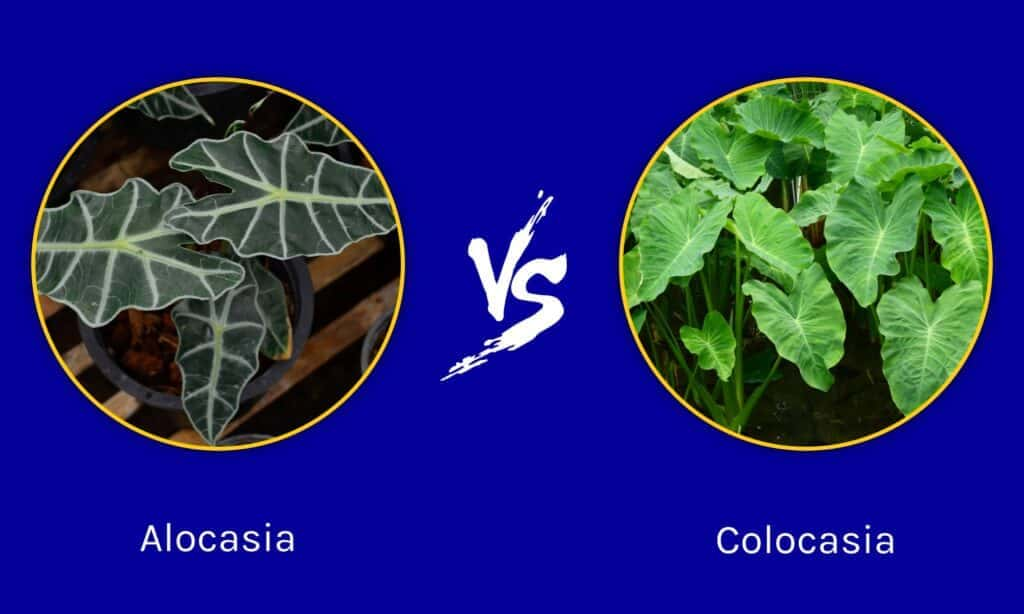Picture this: You’re at your local garden center, completely mesmerized by the most spectacular plant you’ve ever seen.
Enormous heart-shaped leaves that could literally shade a small child, dramatic veining that looks like nature’s own artwork, and a presence so commanding it makes every other plant look like background actors. The tag simply says “Elephant Ear,” and you’re sold.
But here’s where it gets interesting—you’ve just encountered one of gardening’s most beautiful cases of mistaken identity. That stunning plant could be an Alocasia or a Colocasia, two completely different plants that happen to share the same common name. And trust me, the difference matters more than you might think.
I learned this the hard way when I first started my plant journey three years ago. I brought home what I thought was just another “elephant ear” from a clearance rack, treated it like every other houseplant, and watched in dismay as it struggled despite my best efforts.
It wasn’t until I discovered I was caring for a Colocasia like it was an Alocasia that everything clicked into place. One simple adjustment to its watering routine, and suddenly I had the thriving tropical beauty I’d always wanted.
Related post: Chinese Evergreen vs. Peace Lily: Choosing the Perfect Indoor Plant
Why These Plant Twins Cause So Much Confusion
Let’s be honest—Alocasia and Colocasia plants are like botanical twins separated at birth. Both belong to the Araceae family, both have those iconic massive leaves that earn them the “elephant ear” nickname, and both bring that instant tropical drama to any space.
With around 97 species of Alocasia and 16 species of Colocasia floating around in the plant world, even experienced gardeners sometimes scratch their heads trying to tell them apart.
The confusion runs deeper than just looks, though. These plants actually have fascinating different origins that hint at their care preferences.
Alocasia species hail from tropical and subtropical Asia and eastern Australia, often growing on well-draining slopes and as epiphytes where water doesn’t linger.
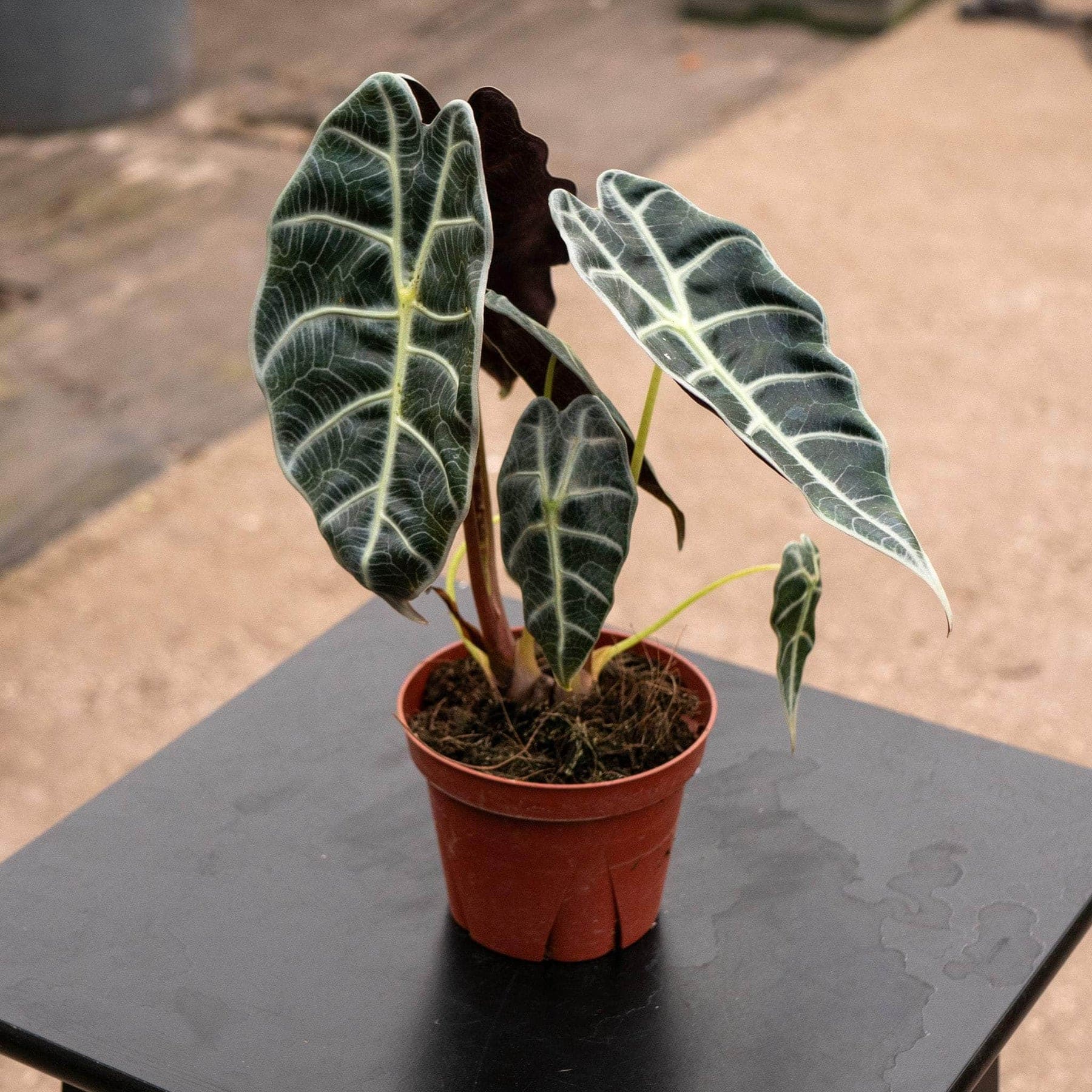
Colocasia, on the other hand, evolved in the wetlands and marshy areas of southeastern Asia and India, which explains why they’re basically aquatic at heart.
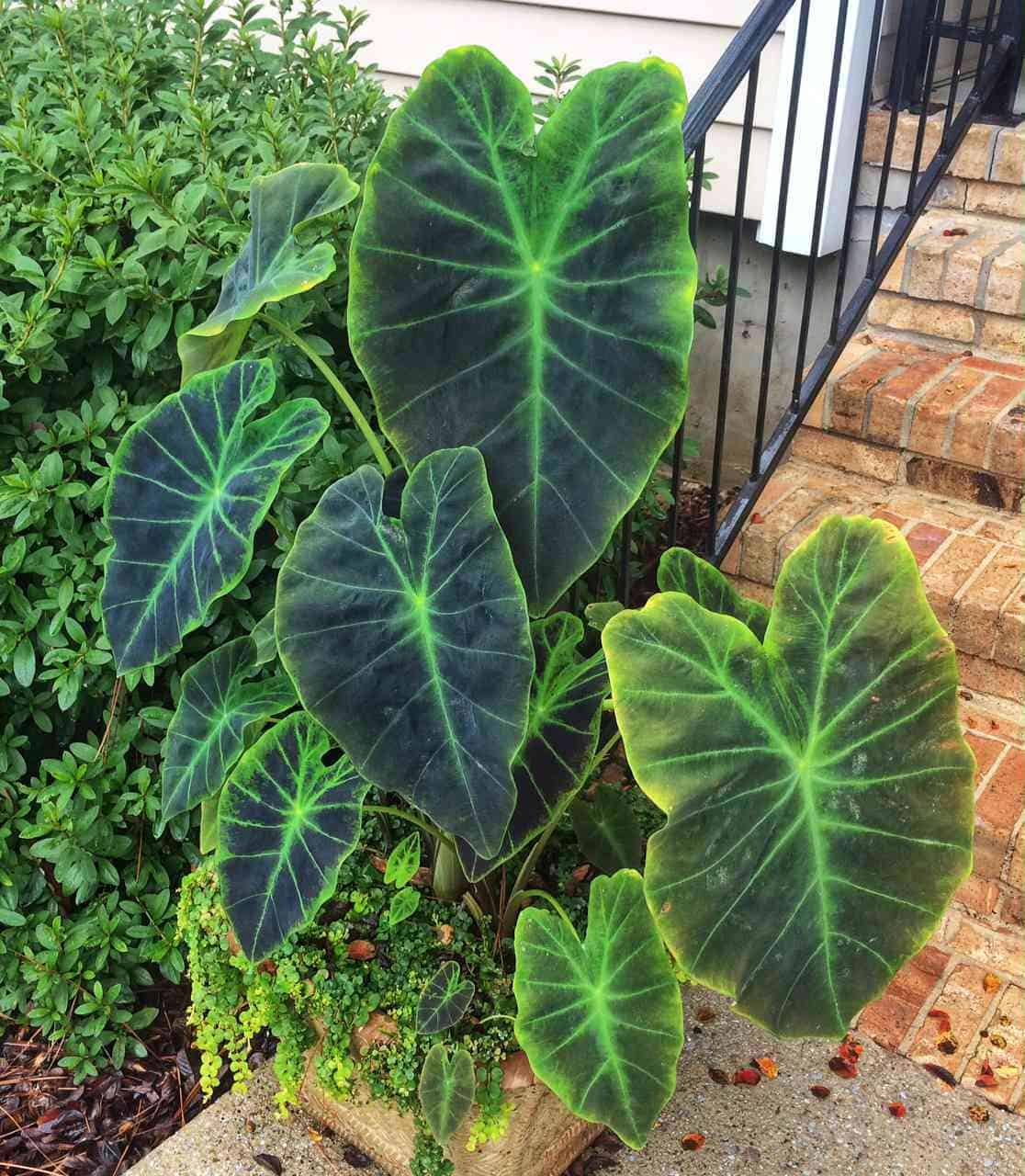
The confusion isn’t helped by the fact that nurseries and garden centers often use “elephant ear” as a catch-all label, sometimes getting the identification wrong themselves.
I’ve seen Colocasia labeled as Alocasia more times than I can count, and vice versa. But here’s the thing—these plants might look like siblings, but they have completely different personalities when it comes to what they need to thrive.
The Foolproof Identification System
Ready for the identification methods that work virtually every time? I’ve developed a simple three-step system that hasn’t failed me yet.
Step 1: The Direction Test
Look at the leaves. No, not the color or the size—look at which direction they’re pointing.
Alocasia leaves point up toward the sky, like they’re reaching for the stars. Their stiff petioles (leaf stems) extend directly into the leaves, creating that upward-pointing, almost proud posture. Think of them as the optimists of the plant world, always looking up.
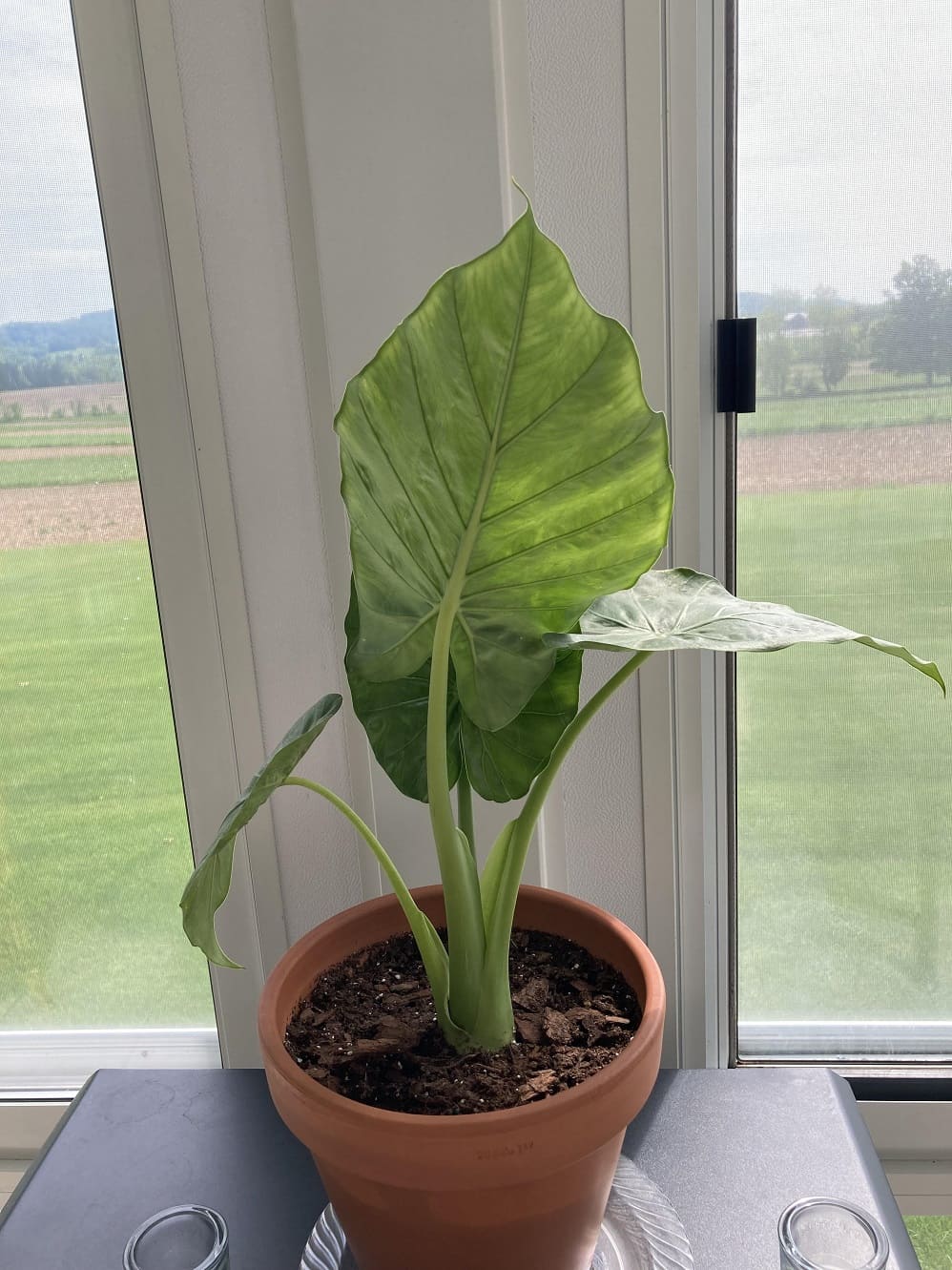
Colocasia leaves point down toward the earth, drooping elegantly like they’re bowing in greeting. Their petioles connect lower on the leaf, causing that characteristic downward droop. They’re the wise, contemplative ones, always looking down as if pondering life’s mysteries.
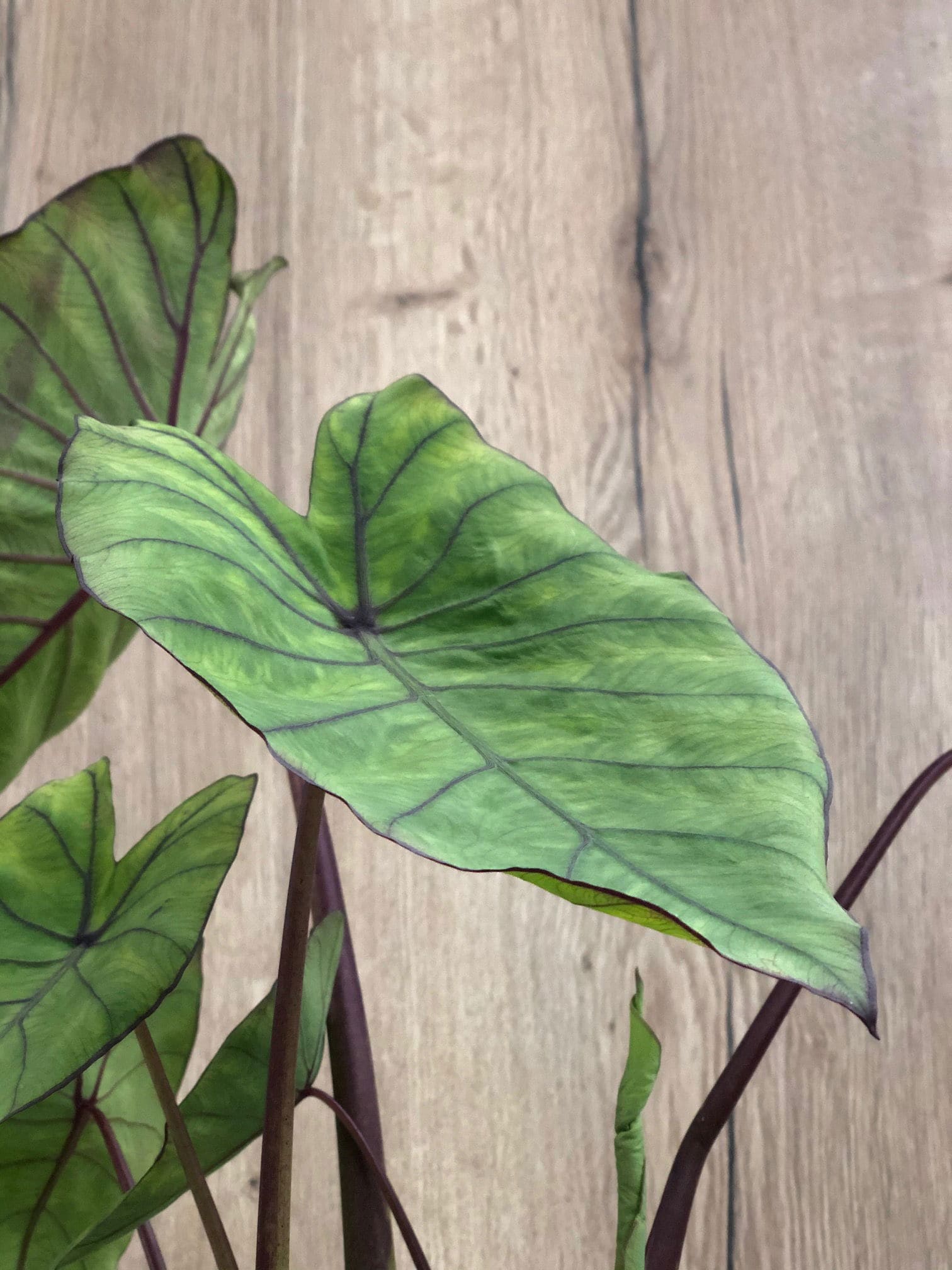
Step 2: The Texture Test
Once you’ve mastered the leaf direction trick, gently touch the leaf surface (both plants are safe to handle, just wash your hands afterward).
- Alocasia leaves feel thick, waxy, and often glossy—like nature’s version of a luxury leather handbag. They’re substantial and sturdy, with a surface that almost seems to repel water. Many varieties have that distinctive shine that catches light beautifully.
- Colocasia leaves have a softer, more matte finish—think more like quality paper or soft fabric. They’re thinner and more pliable, with a texture that feels gentle and welcoming under your fingertips. There’s an organic, earthy quality to their surface that matches their preference for bog-like conditions.
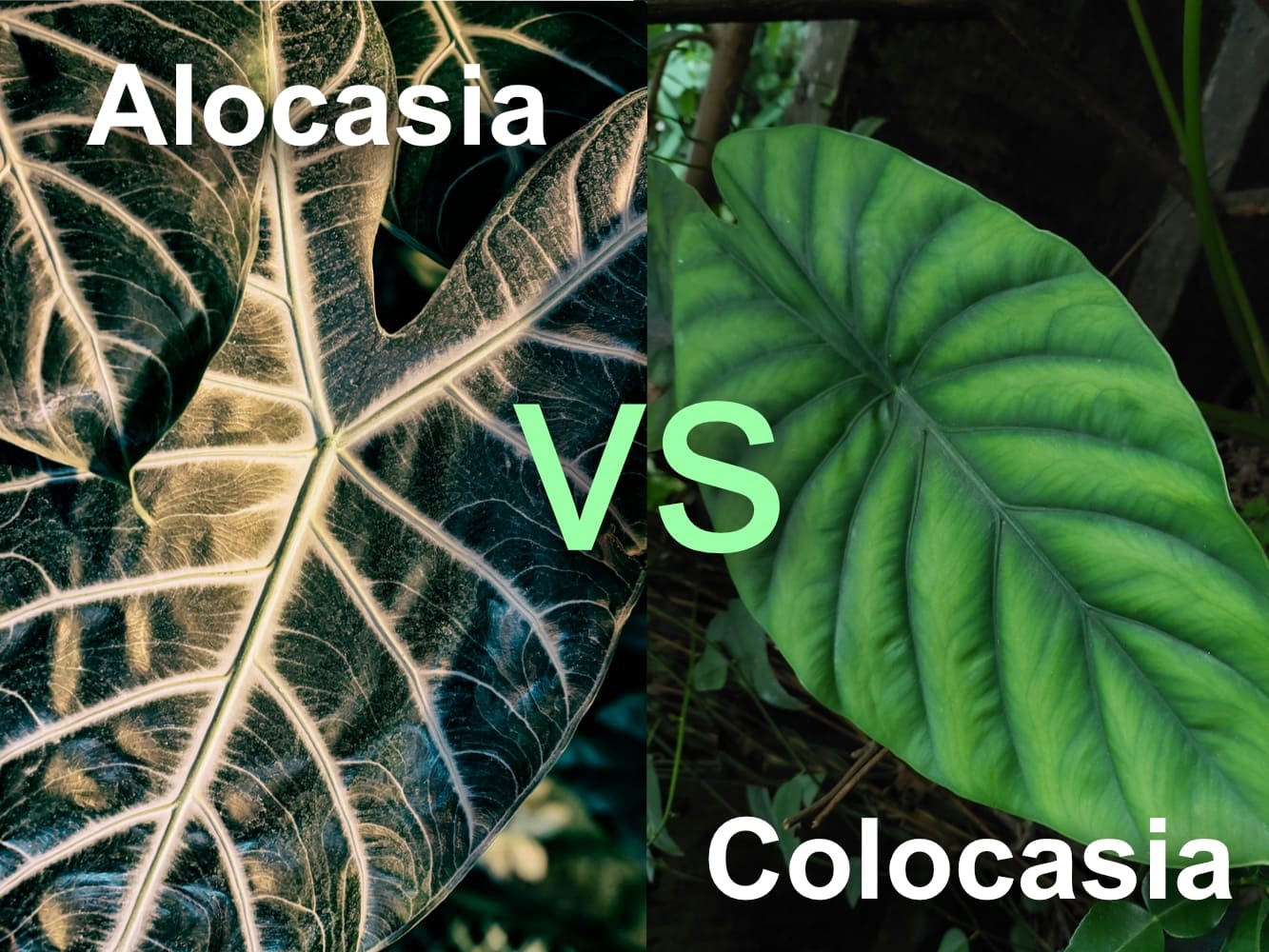
Step 3: The Petiole Attachment Check
For the botanically curious, here’s a more technical method that’s incredibly reliable. Look at where the leaf stem (petiole) connects to the leaf blade.
In Alocasia, the petiole typically connects right at the notch where the two leaf lobes meet—think of it as attaching at the “armpit” of the leaf.
In Colocasia, the petiole attaches further back from the notch, more toward the center of the leaf’s underside, creating that characteristic peltate attachment that allows the leaf to droop naturally.
What’s Happening Underground: The Hidden Differences
While we’re admiring those gorgeous leaves, there’s a whole different world happening below ground that affects everything from propagation to winter storage. Understanding these underground differences has saved me countless headaches when it comes to plant care and multiplication.
Alocasia plants grow from smaller, often elongated tubers and can also develop offset rhizomes. These underground structures are your ticket to expanding your collection—I’ve successfully divided single Alocasia plants into multiple specimens by carefully separating these offsets. The tubers are relatively compact and store easily if you need to overwinter them indoors.
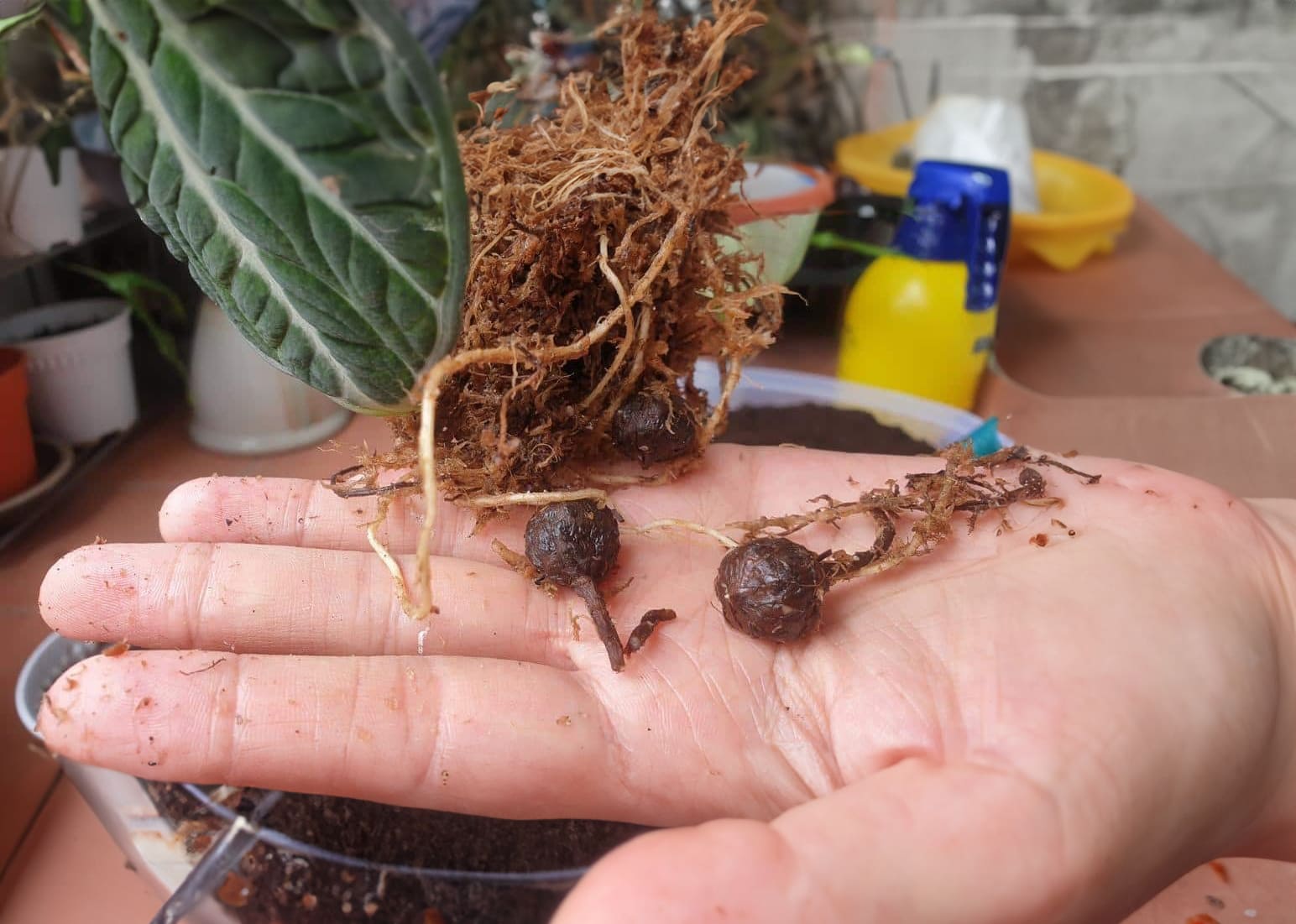
Colocasia plants develop from larger, more substantial corms that are often round and marked with distinctive bands or ridges. These corms can become quite impressive—I have a three-year-old Colocasia whose corm now weighs over two pounds!
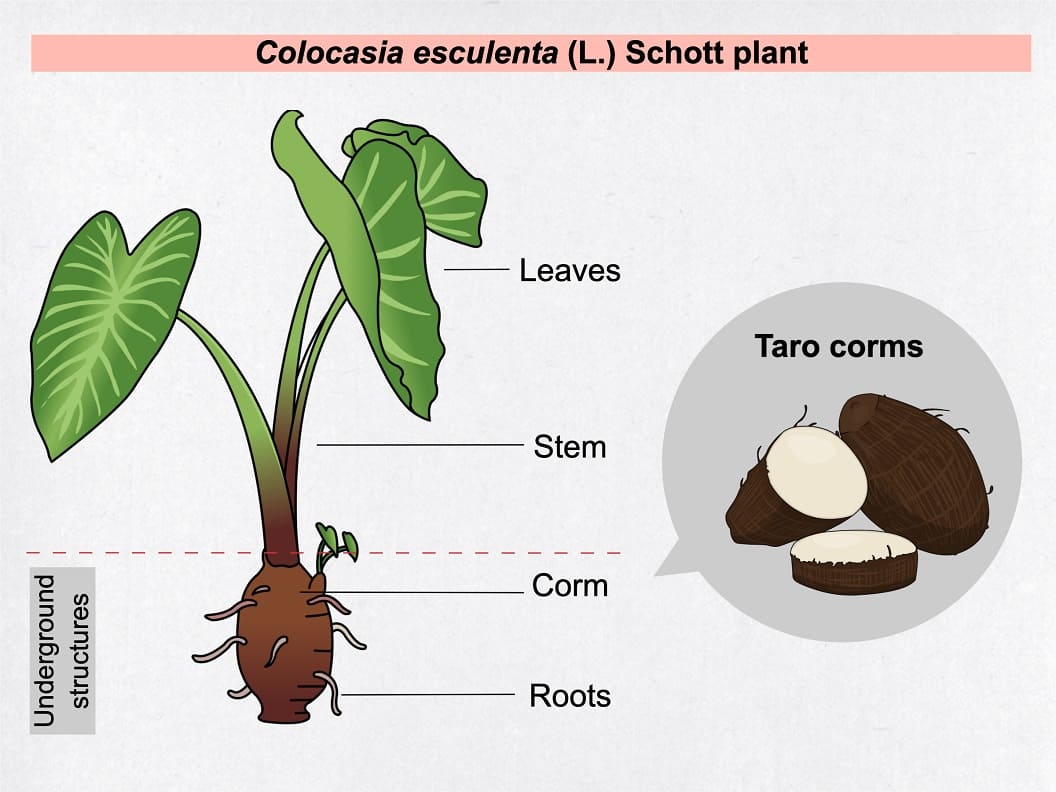
What’s fascinating is that Colocasia corms tend to migrate upward in the soil over time, which is why I’ve learned to check and replant them deeper every few years.
Size Expectations: Planning Your Space
One thing that often surprises new elephant ear enthusiasts is just how dramatically these plants can vary in size. I made the mistake of planting what I thought would be a “medium-sized” Colocasia too close to my patio, only to find myself with a seven-foot giant that completely blocked the afternoon light!
Most Alocasia varieties range from compact jewel types at just 1-2 feet tall (perfect for tabletops) to giants like Alocasia macrorrhiza that can reach an impressive 15 feet in ideal outdoor conditions. The popular houseplant varieties like ‘Polly’ typically stay in the manageable 2-4 foot range.
Colocasia plants generally fall between 3-8 feet tall, though the giant varieties like ‘Thailand Giant’ can exceed 9 feet with leaves spanning 5 feet across. The classic taro varieties usually settle around 4-5 feet, making them perfect statement plants without overwhelming smaller spaces.
Climate Considerations: Knowing Your Zones
If you’re planning to grow these beauties outdoors year-round, hardiness zones become crucial information. This is where many gardeners run into unexpected surprises—I certainly did when my first winter arrived!
Most Alocasia varieties are only hardy in zones 9-11, meaning they need to be treated as annuals or brought indoors in most of the United States. However, their compact size often makes container growing and winter storage quite manageable.
Colocasia plants are generally more cold-tolerant, with many varieties surviving in zones 7-8 with proper mulching. Some exceptionally hardy varieties like ‘Pink China’ have even been reported surviving in zone 6 with adequate protection.
The traditional taro varieties tend to be more cold-hardy than their ornamental cousins, likely due to centuries of cultivation in varied climates.
Where the Magic Happens: Mastering Their Care Preferences
This is where understanding the difference becomes crucial for plant success. These two plants have nearly opposite preferences, which explains why treating them the same often leads to disappointment.
Alocasia: The Particular Aristocrats
Alocasia plants remind me of that sophisticated friend who has very specific preferences but rewards you handsomely when you get things right. They thrive in bright, indirect light or partial shade—think of the light filtering through a forest canopy.
Direct sunlight is their nemesis, capable of turning those gorgeous leaves into crispy shadows of their former glory in just a day or two.
For water, the key is “consistently moist but never soggy.” I’ve found success watering mine when the top inch of soil feels dry, always ensuring excellent drainage. Their tuberous roots are particularly susceptible to rot, so I learned to prioritize drainage over frequency.
During winter, when growth slows dramatically, I reduce watering to prevent the dreaded root rot that claimed my first Alocasia.
Humidity is where Alocasia really shows its tropical heritage. These plants absolutely love humidity levels around 60-70%, which can be challenging in most homes. I’ve had great success grouping my Alocasia with other plants and using a humidifier nearby rather than misting directly on the leaves, which can lead to fungal issues.
Colocasia: The Easygoing Water Lovers
Colocasia plants are like that laid-back friend who’s happy anywhere as long as there’s good food and plenty to drink. They can handle full sun exposure and actually prefer it for the best growth and color development, though they’ll tolerate some shade gracefully.
Here’s where they get really interesting: Colocasia plants are basically aquatic at heart. They love wet, soggy conditions and can even grow in standing water—in fact, many varieties thrive when grown as pond plants or in rain gardens.
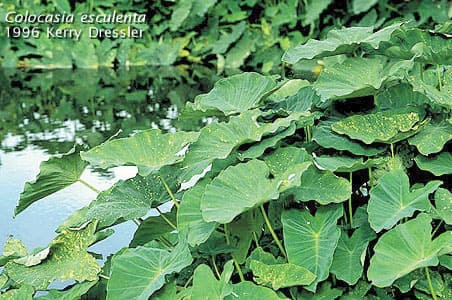
When I finally moved my Colocasia to a spot where it could get morning sun and I could keep it consistently wet, it transformed from a sad, struggling plant into a magnificent specimen with leaves over two feet wide.
The beauty of Colocasia is their forgiveness. Overwater them? They’re happy. Forget to water for a few days? They’ll bounce back once you resume regular care. This resilience makes them excellent choices for beginner gardeners or anyone who tends to be a generous waterer.
Seasonal Care: Navigating the Dormancy Dance
One of the most anxiety-inducing moments for new elephant ear parents is when their plant seemingly begins dying back in fall. Don’t panic—this is completely natural! Both Alocasia and Colocasia are programmed to enter dormancy, but they handle it quite differently.
Alocasia plants often begin their dormancy earlier and more dramatically than Colocasia. You’ll notice leaves yellowing and dying back, starting from the oldest leaves first.
This is your cue to gradually reduce watering and, if you’re in a cold climate, prepare for winter storage. I’ve learned to see this not as plant death but as nature’s way of conserving energy for the next growing season.
Colocasia dormancy tends to be triggered more by temperature drops than shortening days. As nights consistently drop below 50°F, you’ll see the same yellowing and dieback process begin. For outdoor Colocasia in marginal zones, this is when heavy mulching becomes crucial for survival.
For indoor overwintering, I’ve found Alocasia generally adapts better to life as a houseplant during dormancy, while Colocasia often prefers to rest completely. I store dormant Colocasia corms in slightly moist peat moss in a cool basement, checking them monthly for any signs of rot or excessive drying.
Explore 25 Stunning Round-Leaf Houseplants Perfect for Beginners
The Edibility Factor: Dinner vs. Decoration
Here’s a crucial difference that goes beyond just identification—it’s about safety and cultural significance. Many Colocasia varieties are actually important food crops, particularly Colocasia esculenta, known as taro. The tubers are a staple food for over 500 million people worldwide and, when properly prepared, are perfectly safe and nutritious.
The cultural importance of Colocasia cannot be overstated. In Hawaii, taro holds sacred significance and has been cultivated for over 1,000 years.
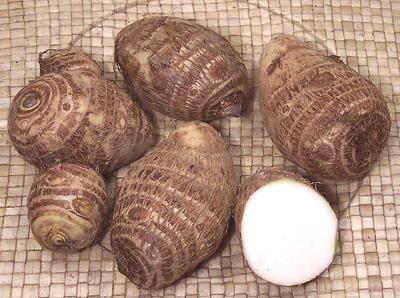
Traditional preparation methods have been passed down through generations, transforming these humble tubers into poi and other traditional foods. Even today, you can find taro roots in many Asian grocery stores, often at a fraction of the cost of ornamental varieties.
However, most Alocasia species are not edible and can be highly toxic if consumed. Some varieties are so poisonous that eating them could be fatal. Even handling some Alocasia plants can cause skin irritation due to calcium oxalate crystals present throughout the plant tissue.
The takeaway? If you’re interested in growing edible elephant ears, stick with properly identified Colocasia varieties, and always research proper preparation methods. And regardless of which type you grow, always keep them away from children and pets who might be tempted to take a taste.
Propagation: Multiplying Your Collection
Once you’ve successfully grown your first elephant ear, the natural next step is expanding your collection. The good news is that both plants are relatively easy to propagate, though the methods differ slightly.
For Alocasia, the best time to divide is during repotting in spring when you can clearly see the offset tubers or rhizomes. I gently separate these smaller tubers, ensuring each has some roots attached, and pot them individually.
The key is patience—these offsets often take several weeks to show new growth, and I’ve learned not to overwater during this vulnerable period.
Colocasia propagation is often even easier due to their larger, more obvious corms. During dormancy, you can separate the smaller cormels (baby corms) that develop around the main corm.
Each cormel has the potential to become a full-sized plant the following season. I’ve had incredible success simply separating these and planting them directly in the garden come spring.
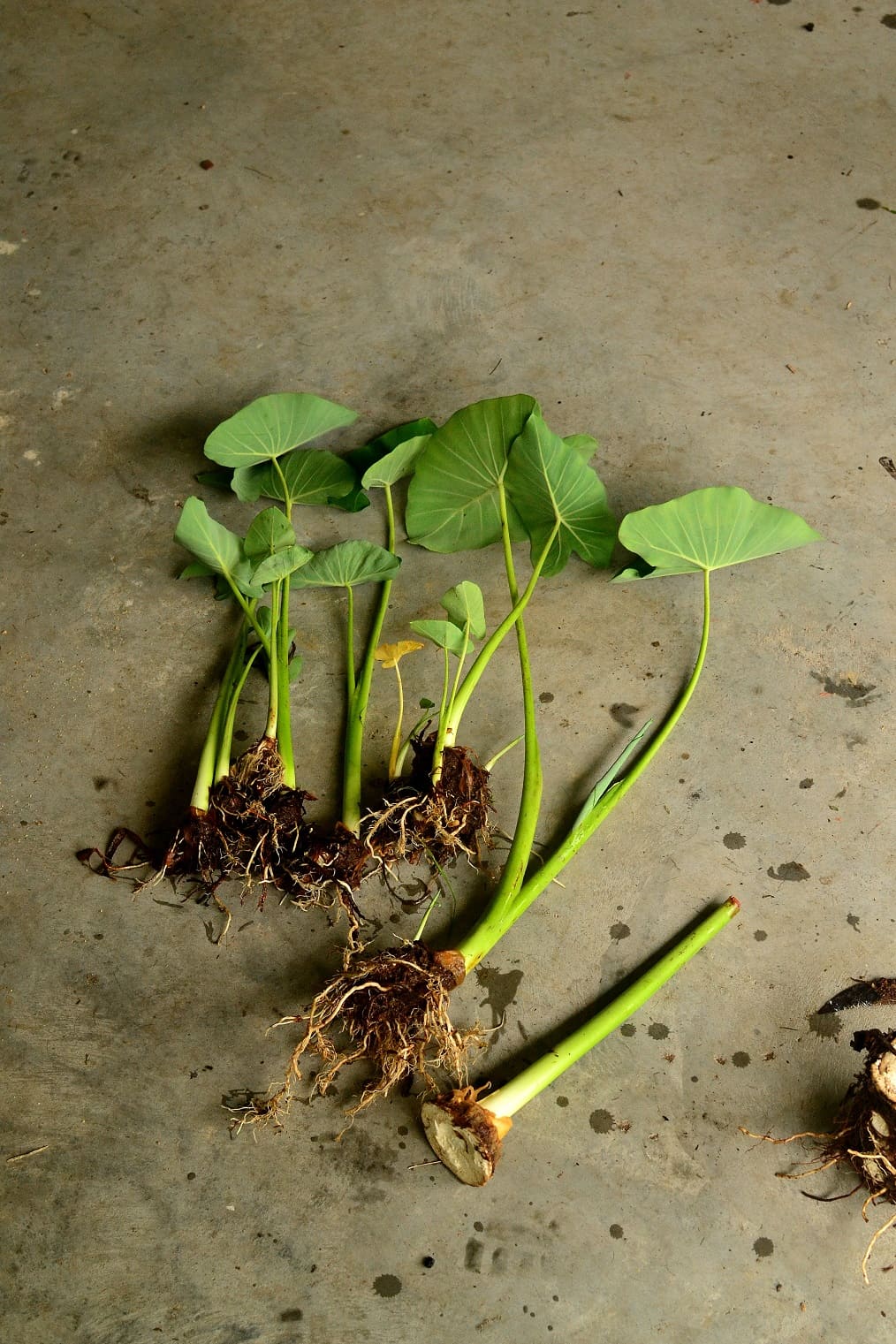
An interesting note: Colocasia plants that develop runners above ground (like ‘Chicago Harlequin’) practically propagate themselves. These runners root wherever they touch moist soil, creating new plants without any intervention from you.
Popular Varieties: Finding Your Perfect Match
Alocasia Superstars for Every Space
- Alocasia ‘Polly’ (Alocasia × amazonica) remains the houseplant superstar for good reason. Its dramatic white veining on dark green leaves creates stunning contrast, and it’s remarkably tolerant of indoor conditions. I recommend this variety to anyone starting their Alocasia journey.
- For something truly unique, Alocasia ‘Stingray’ features leaves with an extended “tail” that creates an unmistakable silhouette. It’s a guaranteed conversation starter and has become one of my most photographed plants.
- Alocasia ‘Silver Dragon’ offers some of the most striking foliage in the plant kingdom, with silvery leaves highlighted by dark veining. The metallic sheen is absolutely stunning when light hits it just right.
- If you have the space and ambition, Alocasia macrorrhiza ‘Giant Taro’ can reach up to 15 feet tall in ideal outdoor conditions. I’ve seen mature specimens that look like something from a prehistoric landscape.
Colocasia Champions for Every Garden
- Colocasia esculenta ‘Black Magic’ revolutionized the ornamental market as the first widely available black-leafed elephant ear. Its dusty purple-black leaves create incredible contrast in garden design, and I’ve found it pairs beautifully with bright yellow or orange flowers.
- Colocasia ‘Mojito’ has become my personal favorite for its unpredictability—each leaf emerges with unique green and dark purple splotching. No two leaves are identical, making every new growth an exciting surprise.
- For those interested in the traditional food aspect, classic Colocasia esculenta offers both beauty and the option to harvest edible tubers. It’s incredibly vigorous and forgiving, making it perfect for beginners.
- The giant varieties like Colocasia gigantea ‘Thailand Giant’ are truly spectacular when given adequate space and resources. I’ve measured leaves over 4 feet long on mature plants, creating an almost Jurassic atmosphere in the garden.
Troubleshooting: When Things Go Wrong
Even with the best care, elephant ears sometimes struggle. I’ve made every mistake in the book, so let me share what I’ve learned from these experiences.
When Alocasia leaves turn yellow, nine times out of ten it’s a watering issue—usually too much water or poor drainage. I’ve learned to immediately check the soil moisture and root health. If the roots are mushy or black, it’s time for emergency repotting with fresh, well-draining soil.
Crispy leaf edges on Alocasia typically indicate too much direct sun or insufficient humidity. Moving the plant to a more protected location and increasing ambient humidity usually resolves this within a few weeks.
For Colocasia, yellowing leaves might actually indicate underwatering or nutrient deficiency. These heavy feeders appreciate regular fertilizing during the growing season, and I’ve seen dramatic improvements after implementing a monthly feeding schedule with balanced liquid fertilizer.
Spider mites can affect both types, especially in dry indoor conditions. I’ve found that maintaining adequate humidity and occasionally hosing down the leaves (for Colocasia) or wiping them with a damp cloth (for Alocasia) helps prevent infestations.
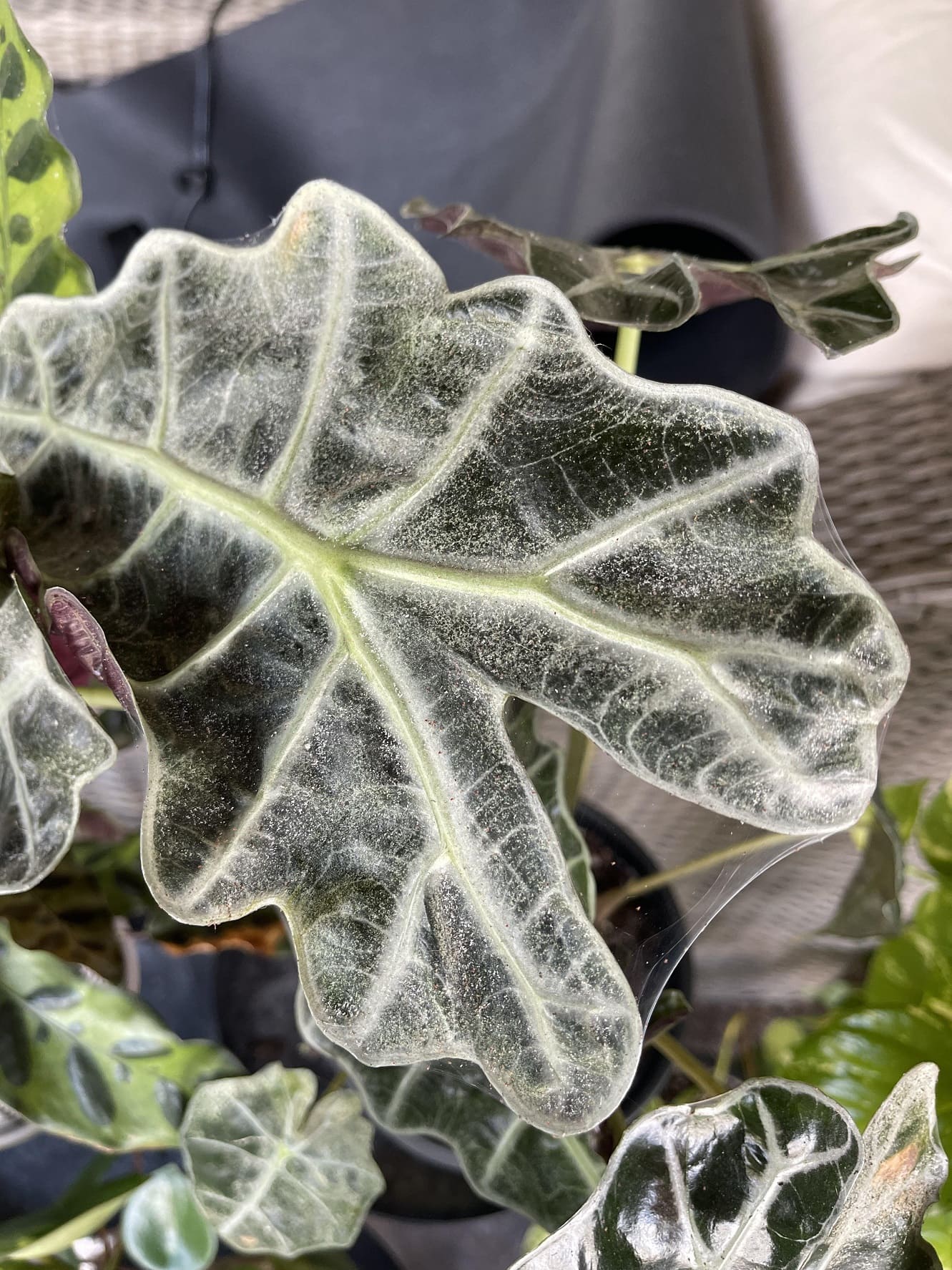
Creating the Perfect Environment
Success with elephant ears often comes down to understanding and recreating their preferred environments. For Alocasia, I try to mimic the filtered light and well-draining conditions of their native forest understory. This means bright bathrooms, spots near east-facing windows, or covered patios where they receive morning light but afternoon protection.
Colocasia thrives when I can replicate wetland conditions—think bog gardens, pond edges, or containers that I can keep consistently saturated. I’ve had incredible success growing them in large pots placed in saucers that I keep filled with water during the growing season.
Both plants benefit enormously from companion planting. Grouping them with other humidity-loving plants creates a beneficial microclimate, and the varied textures create stunning visual combinations.
Some of my favorite partnerships include pairing dark-leafed varieties with bright caladiums or contrasting the bold elephant ear foliage with delicate ferns.
Explore 53 Silver and Gray Foliage Plants for Stunning Gardens
Seasonal Rhythms: Working with Nature’s Calendar
Understanding the natural rhythms of these plants has transformed my success rate. Spring emergence is magical but requires patience—I’ve learned not to panic when other plants are leafing out and my elephant ears are still underground. They prefer soil temperatures above 65°F before breaking dormancy.
Summer is when the magic really happens. This is when both types put on their main show, producing their largest and most numerous leaves. I make sure to maintain consistent care during this period, as any stress can impact their impressive growth.
Fall preparation begins earlier than you might think. As soon as nighttime temperatures consistently drop below 60°F, I start reducing fertilizer and gradually decreasing water for plants that will be stored for winter. For outdoor Colocasia that I’m hoping will survive in the ground, this is when I begin preparing mulch and protective barriers.
The Joy of Growing Giants
What strikes me most about growing elephant ears is how they transform not just your space, but your entire perspective on what’s possible in a garden. There’s something profoundly satisfying about nurturing a plant that can produce leaves larger than your torso, creating an instant tropical paradise regardless of your actual climate.
Whether you choose the upward-reaching elegance of an Alocasia or the downward-drooping majesty of a Colocasia—or better yet, both—you’re adding living sculptures to your space.
These aren’t just plants; they’re architectural elements that create structure, provide dramatic focal points, and transport you to far-off tropical paradises every time you look at them.
The learning curve might seem steep at first, but I promise that once you understand what each type needs, caring for elephant ears becomes second nature. Start with one variety, master its preferences, and then expand your collection. Before you know it, you’ll be the person friends turn to when they need help identifying their own elephant ear mysteries.
Remember the simple rule that started this journey: upward leaves usually mean Alocasia, downward leaves usually mean Colocasia. But more importantly, both will reward your proper care with spectacular tropical beauty that brings a little piece of paradise into your everyday life.
In a world that often feels rushed and artificial, there’s something deeply grounding about tending to these magnificent plants and watching them flourish under your care.
